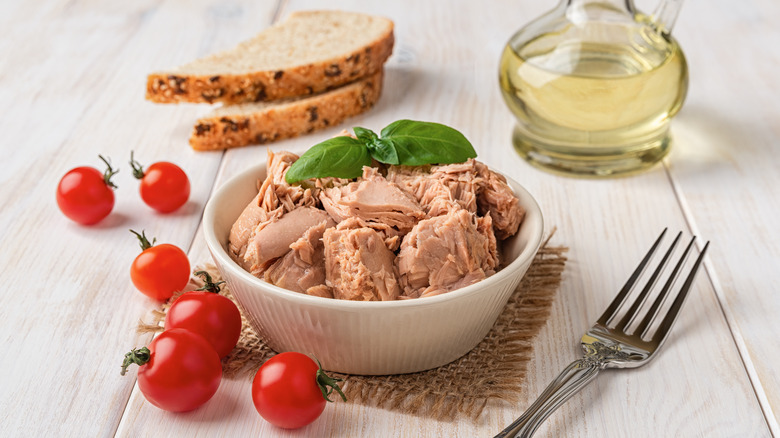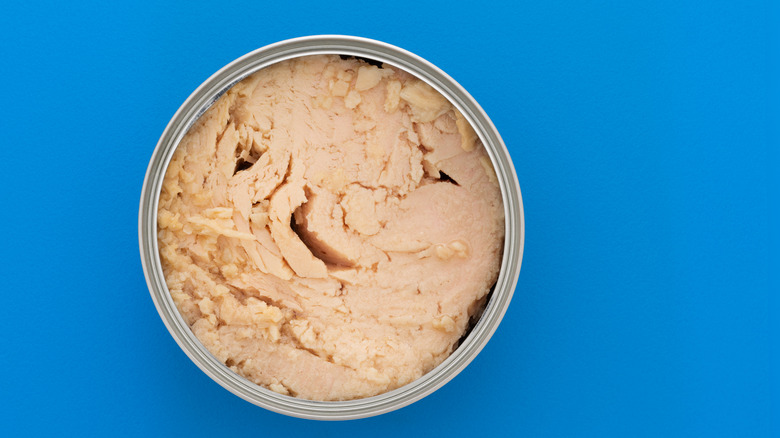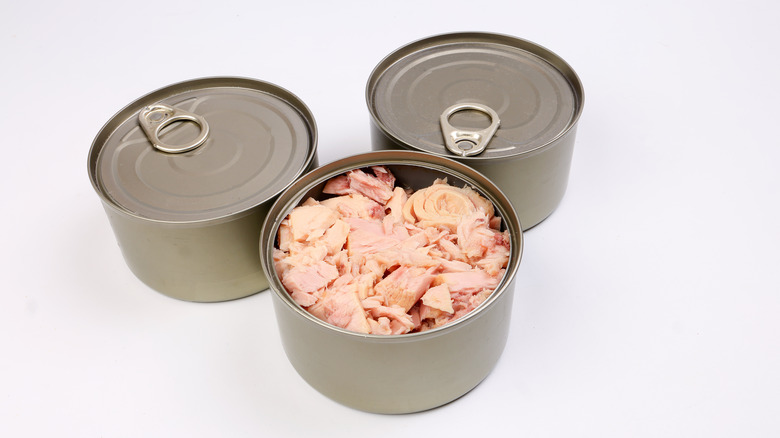What Is The Difference Between Solid And Chunk Tuna?
When you are trying to decide what kind of prepackaged tuna to purchase at the grocery store, traditionally, there have been a few things to consider, such as what type of tuna (albacore or skipjack) and how it's packaged (in water or oil). Nowadays, the decision is made even harder as there are many flavoring options like lemon pepper, ranch, and spicy Thai chili.
Another criterion to add to the mix is chunk tuna or solid tuna, both of which are commonly found on store shelves. These terms refer to the size of the tuna in the cans. Chunk tuna comes in small pieces, while solid tuna comes as larger filet pieces. The two don't really differ when it comes to nutritional makeup, however, not all brands come packaged both as solid and chunk. We'll tell you why and how to pick the right one for your next tuna recipe.
Solid tuna comes from bigger fish
Whether the tuna is sold as chunks versus solid depends entirely upon the size of the fish and how the muscle holds up during the precooking process. Both albacore tuna and skipjack tuna (usually labeled canned light or chunk light) are much smaller than yellowfin tuna, which generally grow up to 7 feet long and weigh about 400 pounds. Because of their size, it's easier to collect whole filets of yellowfin tuna to be packaged and sold as solid tuna. Because it's not as light and delicate as albacore and skipjack tuna, you can see the firm, distinct filet layers.
However, sometimes a combination of tuna varieties will be prepared together, such as yellowfin and skipjack. In those cases, the larger yellowfin will be cut into smaller portions to match the skipjack, resulting in the larger yellowfin tuna also being sold as chunk tuna.
Chunk tuna has smaller pieces
Cans of chunk tuna will contain varying flake sizes and are generally made with meat from albacore or skipjack tuna, which are smaller kinds of tuna at about 125 pounds and 70 pounds, respectively. During the precooking process, these lighter and more delicate filets don't stay as intact as yellowfin tunas, thus, are more commonly packaged in chunks or pieces. Chunk tuna also generally retails for a lower price than solid tuna.
Because cans of chunk tuna contain smaller pieces, they are best bought for tuna salad, casseroles, or for recipes where a smoother texture is preferred. Conversely, solid tuna is better suited for pasta and as a mix-in for green salads when you want larger pieces. But both solid and chunk tuna essentially have the same flavor, which is a little stronger than fresh tuna.
When it comes to canned tuna, size does matter.


